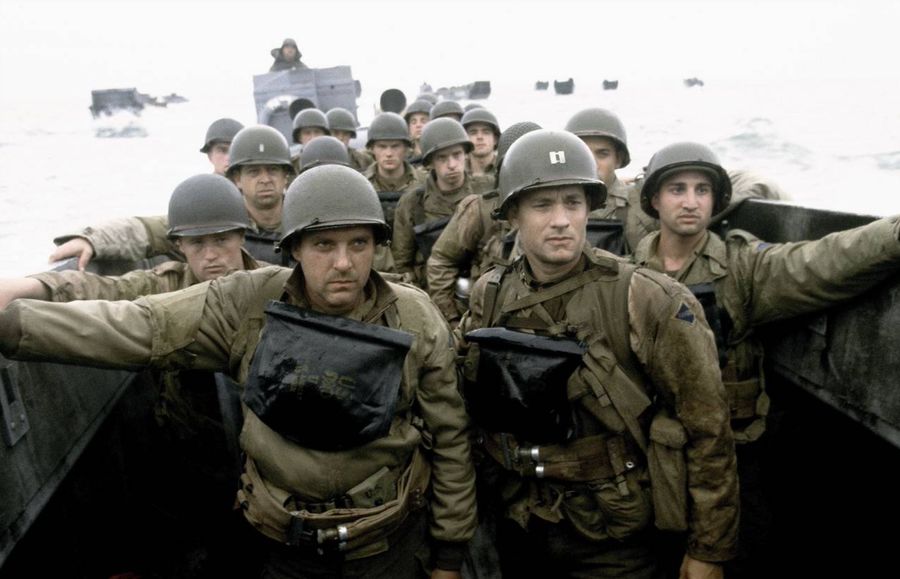There are few war films that stand up to the potent retelling of the Normandy landings and beyond in the Second World War better than Steven Spielberg’s Saving Private Ryan. but what were the director’s true intentions behind the project?
Spielberg’s epic tale of war, Saving Private Ryan, released to critical praise in 1998, won the filmmaker five Academy Awards, including Best Director. The graphic, chilling depiction of the Normandy Landings, particularly the Omaha Beach assault, left a decisive impact on audiences, becoming the highest-grossing film in the United States in 1998, and the second-highest worldwide. Furthermore, the following year the film made an additional $44 million through its release on home video.
Saving Private Ryan’s emotive intensity was an even more traumatic viewing experience for real World War Two veterans due to the film’s realism, leading to a significant rise in veterans visiting post-traumatic stress disorder councillors upon the film’s release, with The Department of Veteran’s Affairs even creating a hotline for those specifically affected by the film. Saving Private Ryan’s realistic depiction of the events of June 6th 1944, was most notably achieved through a murky and muted colour palette and handheld, shaky cameras, emulating the chaos of the events that had taken place only 54 years prior.
Discussing the film, Spielberg has previously stated that Saving Private Ryan was never meant to be thrilling, or an adventure, simply a recreation and documentation of the Normandy Landings, the largest seaborne invasion the world had ever seen. Spielberg’s interest in the D-Day landing was piqued when he read Stephen E. Ambrose’s books D-Day and Citizen Soldiers, describing the author as the father of all combat veterans in America. The immaculate attention to detail that emerged from the exceptional research that went into Spielberg’s monumental creation allowed the film to function as a war documentary.
Cinematographer Janusz Kamiński said in an interview that “we did not want this to look like a Technicolour extravaganza about World War Two, but more like colour newsreel footage from the 1940s, which is very desaturated and low-tech”. To achieve this look, Kaminski stripped the protective coating from the camera lenses before putting the film’s negatives through a bleach bypass, which reduces the exposure latitude and saturation, creating more grain and contrast, thus emulating the gritty war-time look that was vital for Spielberg’s desired portrayal of the Normandy Landings.
Spielberg decided that the film must be “ugly” in order to match the events of the film, however, the graphic depictions of the events led him to fear that the movie would never be shown in an American cinema or labelled NC-17, resulting in only adults seeing it and halting his message. He relied upon the film’s historical importance and accuracy of the day that “basically saved Western democracy,” in order for the film to be shown with an R rating, which allowed children to view the film in the company of an adult. Spielberg hoped that younger audiences would come into the movie and learn about the horrors of war and the sacrifices made by soldiers that were the same age as them, stating that he believed the film to be more than just the exploitation of World War Two.
The director certainly achieved his aims, receiving credit for captivating cultural interest in World War Two media, and inspiring countless war films, such as Christopher Nolan’s Dunkirk (2017), who stated that Spielberg’s use of “the language of horror […] one whereby you’re looking away from the screen” in Saving Private Ryan was a huge point of reference for him. The epic masterpiece will likely remain a vital tool for future generations.
Watch Saving Private Ryan on Netflix now.
